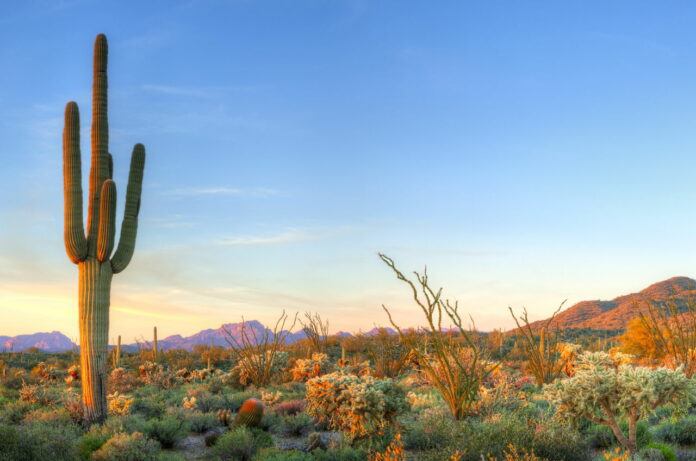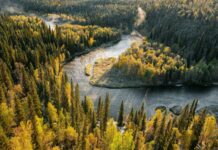Before reading about “Desert biome” let’s learn about the term “desert,” meaning “abandoned.” How apt, given that almost all people’s perceptions of deserts include vast dunes and dismal stretches of arid terrain. Although there are various deserts, all pictures are in some parts of the world. Generally, a desert is defined by its intrinsic absence of consistent rainfall, although scientists classify deserts into other groups based on a range of extra features. These variables include local fauna and flora as well as the temperatures, moisture, geography, soil, and mineral composition.
What is the definition of the “desert biome”?
The desert biome is the distinctive group of creatures and plants inhabiting the world’s deserts. Each continent has deserts, which cover about 30% of the planet’s area. The key attribute of deserts is a scarcity of rainfall; certain desert regions experience extended periods with no rain. The animals that can survive in this brutal environment/desert biome location and make up the desert biome.
The desert biome characteristics, desert biome location, and the usual species of animals and plants that can be found there are all covered in the information on this page.
Different Deserts:-
Dry and Hot
Hot and dry desserts are categorized as hot all year round and during summer. They only get a little bit of rain during the winter. Typically, soils are stony and shallow with proper drainage. Cacti, shrubs, and tiny trees are all types of plants.
Semi-arid
Compared to dry and hot deserts, semi-arid deserts have more distinct seasons. Winter precipitation is low, while summers are generally hot and dry. Various shrubby and grass plant species can be found in semi-arid deserts.
Coastal
Such deserts can be located in relatively warm to cool climates. Summers are often warm and long, whereas winters are usually chilly and brief. More plants can be found in coastal deserts than in hot, dry, or semi-arid deserts.
How come deserts are so hot?
A “humidity blanket” shields the Earth from the sun’s strong warmth in most regions, where air moisture keeps the direct sunlight from reaching the atmosphere fully. However, in deserts, moisture is limited, and there is little moisture in the air, which allows the sun’s rays to pass through the atmosphere and heat the Earth to dangerous levels. The absence of humidity also explains the dramatic temperature variations found in deserts.
Worldwide Deserts:-
- Western Deserts of North America
- South America: Patagonian and Atacama
- Africa: Kalahari, Namib, Sahara, and Arabian
- Asia: Iranian, Indian, Takla Makan, Turkestan, and the Gobi
- Australia is a country.
The majority of such “desert biomes” are also divided into desert biome locations, each of which has a unique name. The Sonoran, Mojave, Great Basin, and Chihuahuan Deserts are the 4 divisions of the North American Desert.
Read More – Temperate Seasonal Forests| Definition, Information, Characteristics|
How to Survive in the Desert?
Among the least pleasant places on the planet is a desert, but despite the tough, dry environment, some animals have found a way of existence. Amazing adaptations let wilderness animals and plants endure the harsh environment of the desert.
Plant Adaptations in Deserts!
Each living thing on Earth needs some wetness to thrive, and in desert environments, this can be the most restricting element. The relatively low average rainfall in deserts makes it extremely difficult to sustain plant life. Plants can either evade the effects of drought or adapt to them by developing drought resistance.
A Temporary Eden During the Rainy Season!
Even the world’s drier, warmest, and most desolate deserts need to experience precipitation occasionally to support living, and whenever it rains, it showers! Annually (or every few years in some areas), the desert sky breaks, bringing soothing droplets of liquid life that renew the surroundings. The desert immediately changes from a barren wasteland to a flourishing garden of lush plants. Dormant seeds begin to sprout; bare branches shoot out lush evergreens, and flowers and fruits bloom luxuriously.
Desert-Biome Plants
Desert plants need to acquire hydration and reserve it for periods when it doesn’t rain. Some can collect rainwater that drops over onto the ground, such as mist drops or condensed fog, thanks to a web of shallow roots. Some plants have long tap roots which can penetrate a great depth of water.
Cacti, euphorbias, and succulents are common desert plants that use water carefully. Their stems and leaves have a waxy cuticle, which helps stop perspiration. They frequently feature spines that prevent herbivorous animals searching for food & humidity from eating their leaves and stems.
Desert-Biome Animals
Rodents constitute the largest group of desert mammals. In desert biome characteristics, They consume seeds as food, and their incredible capacity for non-hydration is amazing. Instead, they make use of metabolism water, which is a product of the digestion and absorption of food by their bodies. Their kidneys may create extremely concentrated urine that aids in eliminating waste from the body without dehydrating it.
In the southwest of North America, kangaroo rats retain seeds in their burrows, which provide an extra supply of moisture by absorbing water from the damp air.
Read More – BOREAL FOREST TEMPERATURE: Location, Climate, Plants and Animals
CONCLUSION
In conclusion, the article has attempted to give you information about “Desert biome.” I hope the language in this post is clear and understandable regarding desert biome characteristics.
FREQUENTLY ASKED QUESTIONS
Q1) what is a desert?
Ans- Most specialists concur that a desert biome is any land region with annual precipitation totals less than 25 cm (10 inches).
Q2) What are examples of desert biomes ?
Ans- desert biome location is as follows:- South Asia, southern Africa, Australia, Central America, and North America all have hot, arid deserts.
Q3) what causes desert biomes?
Ans- When there is a prolonged dry spell, a desert develops. Its geological conformational changes may vary, primarily as a result of the impact of the wind.
Read More- Explore a Variety of Luxury Desert Safari Tours in Dubai

















